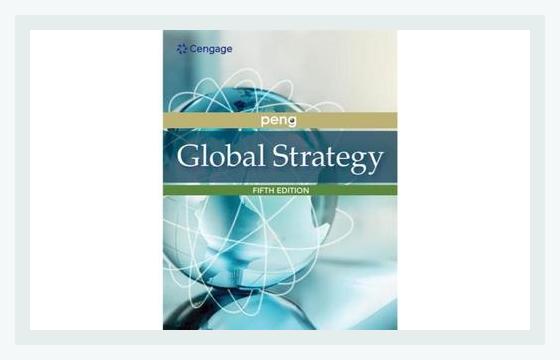Business StrategyInternational Business
Introduction
Mike W. Peng’s “Global Strategy” offers a comprehensive overview of strategic management from a global perspective, integrating insights from economics, political science, sociology, and international business. The book is structured to address the complexities and challenges that businesses face in a globalized environment and offers actionable strategies that facilitate successful international operations.
Chapter 1: The Rise of Globalization
Main Point: Understanding the historical and ongoing trends of globalization.
– Example: Peng discusses the rapid development of emerging markets and their integration into the global economy.
– Action: Stay updated on global economic trends and seek opportunities in emerging markets.
Chapter 2: Institutions, Cultures, and Ethics
Main Point: The role of institutions and culture in shaping global strategies.
– Example: Differences in corporate governance models between countries.
– Action: Learn the local regulatory and cultural environment before entering a new market.
Chapter 3: Industry-Based Considerations
Main Point: Applying industry-based views to global strategy.
– Example: Analyzing competitive forces in international markets using Porter’s Five Forces.
– Action: Conduct a thorough industry analysis to understand competitive pressures and opportunities abroad.
Chapter 4: Resource-Based Considerations
Main Point: Leveraging firm-specific resources and capabilities.
– Example: Peng illustrates how multinational corporations (MNCs) use their unique resources to gain competitive advantages.
– Action: Identify and leverage your firm’s unique resources when expanding internationally.
Chapter 5: Institution-Based Considerations
Main Point: Navigating institutional contexts in international strategy.
– Example: Adapting to different regulatory systems, such as the stringent environmental laws in the EU.
– Action: Develop flexible strategies to cope with varying regulatory environments.
Chapter 6: Entry Strategies
Main Point: Evaluating different entry strategies into foreign markets.
– Example: Comparing joint ventures to wholly-owned subsidiaries.
– Action: Choose an entry mode that aligns with your firm’s risk tolerance and strategic goals.
Chapter 7: Strategic Alliances and Networks
Main Point: The importance of forming strategic alliances.
– Example: Alibaba’s partnerships with local firms in Southeast Asia.
– Action: Build strategic alliances to leverage local expertise and reduce entry barriers.
Chapter 8: Diversification and Global Integration
Main Point: Balancing diversification with integration for global competitiveness.
– Example: GE’s strategy of local adaptation alongside global standardization.
– Action: Balance global standardization with local adaptation to meet diverse market demands.
Chapter 9: Innovation Strategies
Main Point: Fostering innovation in a global context.
– Example: Use of cross-functional teams to drive innovation across global networks.
– Action: Foster a culture of innovation and establish R&D centers in multiple regions.
Chapter 10: Corporate Governance and Responsibility
Main Point: Global corporate governance and ethical responsibilities.
– Example: Adoption of global CSR standards by companies like Shell.
– Action: Implement global corporate governance frameworks and adopt CSR policies that meet local expectations.
Chapter 11: Performance and Strategy
Main Point: Measuring performance in international business.
– Example: Balanced Scorecard approach to evaluate multiple aspects of performance.
– Action: Use comprehensive performance measurement tools to track and manage international operations effectively.
Chapter 12: The Future of Global Strategy
Main Point: Predicting future trends and remaining agile.
– Example: Considering the impact of digital transformation on global strategy.
– Action: Stay agile and continuously update your strategy to adapt to future global shifts.
Conclusion
In “Global Strategy,” Mike W. Peng provides actionable insights and a robust framework for navigating the complex landscape of international business. Understanding the historical context of globalization, appreciating cultural and institutional differences, leveraging firm-specific resources, and adopting flexible entry and innovation strategies are crucial for success. By incorporating these strategies, businesses can optimize their performance and maintain competitive advantages in an increasingly interconnected world.
By delving into the specific examples and applying the suggested actions from Peng’s book, practitioners can arm themselves with the necessary tools to effectively operate on a global scale.
